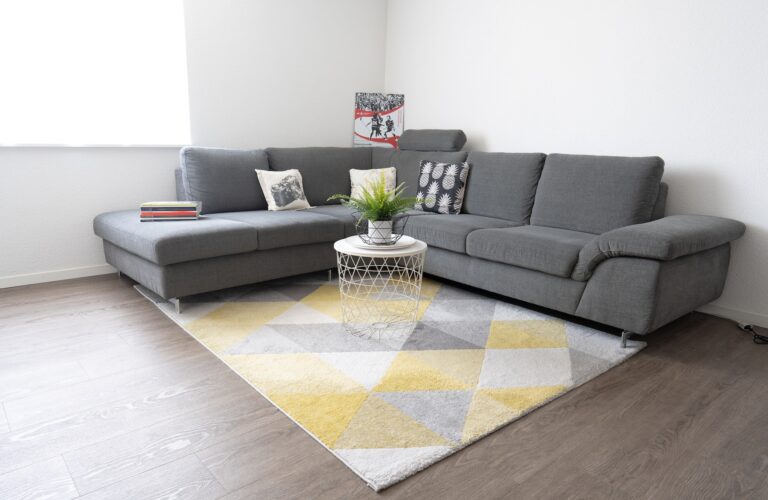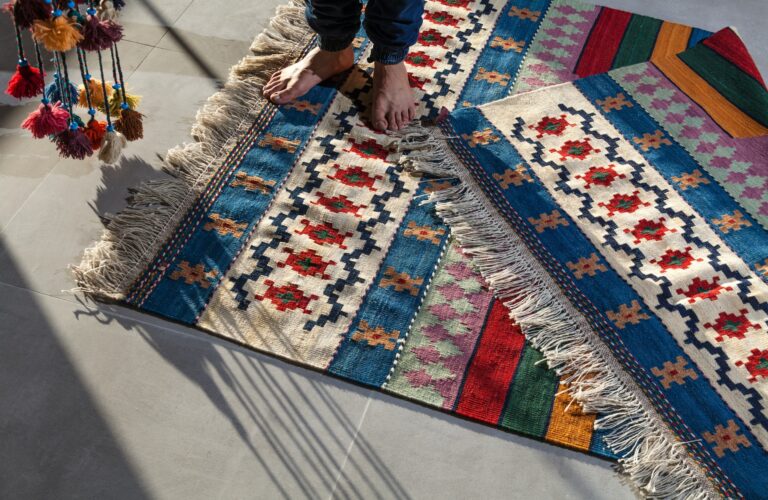Not all rug materials are created equal. The type of material in your handmade rugs matters. Wool, cotton, traditional silk and bamboo silk are all excellent materials for area rugs because they have the quality and durability to last generations. The same cannot be said for the following list of rug materials you should avoid:
- Art Silk — Also called artificial silk, acrylic, imitation silk, or viscose, art silk is a blend of two or more materials to create a silk-like consistency. The end result, however, is lower quality and longevity than real silk. This material may have some natural silk mixed with artificial fibers like rayon. The look of art silk is similar to the real thing, but you can tell by the feel and sheen of the material whether it’s real or not. Some rug stores may try to pass off art silk as real (and probably marking up the price accordingly), so don’t fret if you feel like you need a second opinion before you purchase a rug.
- “Dead” Wool — It makes sense that the best wool is sheared from healthy animals. Another type of wool you may run into is called dead wool because it comes from unhealthy or dead animals. The difference is the oils in the wool remain intact when they come from healthy, living animals, making it softer and smoother to the touch. Dead wool lacks these oils and feels coarse.
- Polyester — If you lived through the 1970s in the U.S., you are familiar with the polyester leisure suit. Polyester is a synthetic material that is cheap to make, but you eventually pay the price when you buy polyester area rugs when they begin to deteriorate quickly with use.
- Sisal — This material comes from an Agave plant, though it’s unclear where the plant originated since now it’s present around the world. Coarse and tough, you sometimes find this material in outdoor carpets and cat scratching posts. While this material has its uses, we wouldn’t recommend using it to decorate the interior floors of your home. You cannot attain the fine level of detail that indoor rugs typically have with sisal.
- Seagrass — This tough material comes from flowering plants and grows on the ocean floor. Seagrass can be used as a fertilizer or to make furniture. It’s woven to create chairs, tables, and sometimes rugs. Much like sisal, this is a rough yet sturdy material that may be ideal for outdoor areas but won’t provide the same statement indoors.
- Jute — A valuable commodity when it comes to creating strong ropes and threads, jute comes from plants in the Sparrmanniaceae family (quite a mouth full!). When turned into cloth, carpets & rugs, however, it is rough to walk on, although blending it with cotton reduces its coarseness.
- Olefin — This synthetic fiber can resist almost any abuse because of its strength and durability. It doesn’t absorb water well and dries quickly. Rugs made out of this material typically have lower values and won’t gain value over time. This material almost makes repairing your rugs very difficult. Colors also won’t be as rich.









